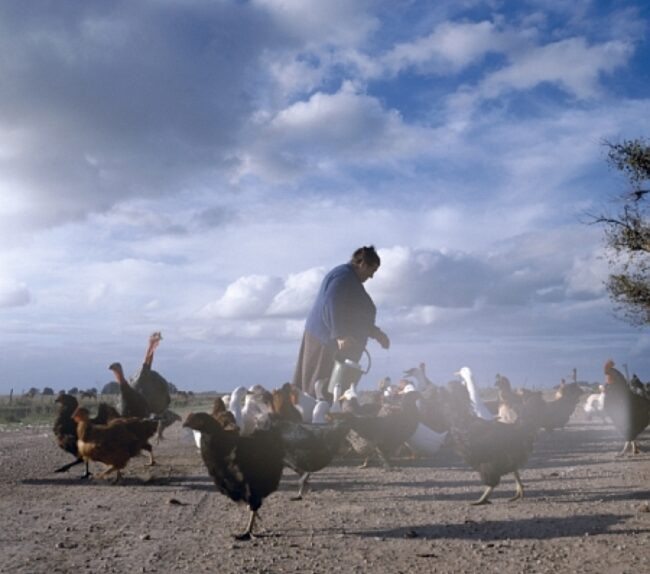One problem with writing a series of essays on photographers is the necessary evil of categorization. Is this photographer a portrait artist, is that photographer a street photographer, is this other photographer French because they grew up in France, or Hungarian because they were born in Hungary?
Alessandra Sanguinetti was born in New York City in 1968. Absolutely American. But her family moved to Argentina in 1970, when she was two years old; she grew up there and lived there until 2003–so clearly she’s Argentinian. Her nationality doesn’t really matter (aside from that necessary evil mentioned in the previous paragraph) except for one thing, which I’ll mention a little later.
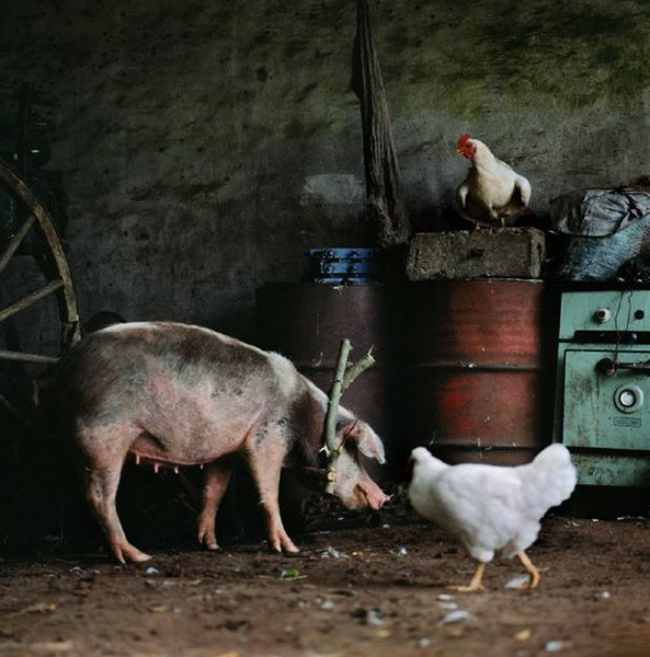
When she was nine years old, she discovered some books by photographers on the bottom shelf of her mother’s bookshelves.
“I was very much impacted by all those books, especially Wisconsin Death Trip—I don’t know if you know it. It is a book by Michael Lesy, where he recounts this story about this small town in Wisconsin, called Black River Falls, at the turn of the last century. The images are mainly of… well, there are a lot of pictures of death, well not a lot, but there are several pictures of dead little girls and of babies, and he just juxtaposed all these photos he found from a local photographer together with logs from mental asylums and newspaper clippings of that time in order to create this feeling and mood of this place…and then when I saw another picture of a very very old lady and then something clicked and I realized I wouldn’t know all those people if it wasn’t for those photographs.”
She eventually asked her mother for a camera, and was given a small Kodak. The camera, she says, became her way of “dealing with things.” Because she grew up in Argentina (this is where her nationality matters), she finds it easier to connect with things–and people–in Argentina.
“Even the task of taking a portrait of somebody inside their house in New York would be more difficult for me than to take a portrait of somebody in their house in Argentina, in Buenos Aires. It’s just that feeling of when I am there—I feel connected to everything.”
In 1996, Sanguinetti began what became a nine-year-long project examining the relationship between humankind and the domesticated animals on a couple of Argentine farms. She became familiar with the families living on the farms, she learned the rhythms of the ebb and flow of farm life, and she came to understand and appreciate the matter-of-fact relationship between the farmers and the animals they raised.
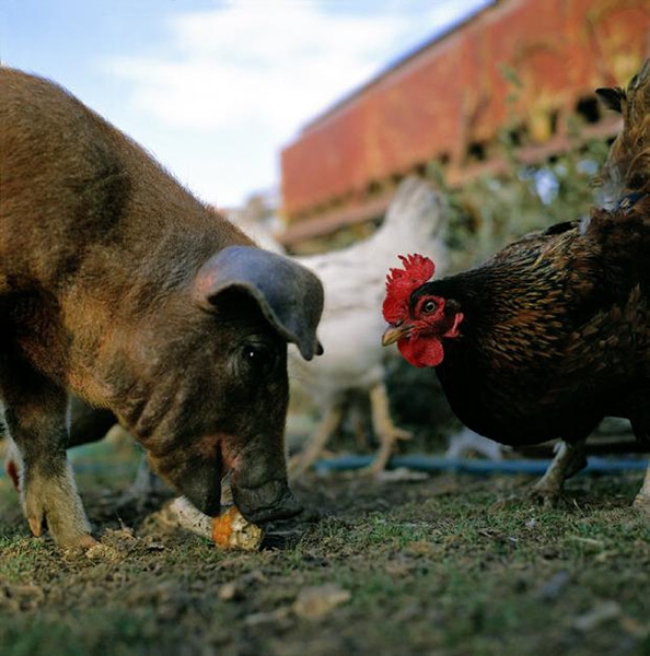
Sanguinetti’s chronicle of that life and that relationship is entitled On the Sixth Day, a reference to the book of Genesis. It was on the 6th day that the Biblical God is said to have both created the beasts of the earth and given Man “dominion over the fish of the sea, and over the fowl of the air, and over the cattle, and over all the earth, and over every creeping thing that creepeth upon the earth.”
Sanguinetti’s approach to photographing the series On the Sixth Day is, in a way, an echo of the approach the farmers take to their work. Unhurried, pragmatic, no-nonsense. Her approach to her subjects echoes the approach farmers take to their livestock. Realistic, sensible, unsentimental.
The animals raised on a farm are livestock are not pets. They are exactly what the term describes: living stock. They are goods kept on the premises for convenient access and use. The only difference between the domesticated animals and the wildlife is that harvesting wildlife is more inconvenient. They’re all destined for the table, they’re all under the dominion of Man.
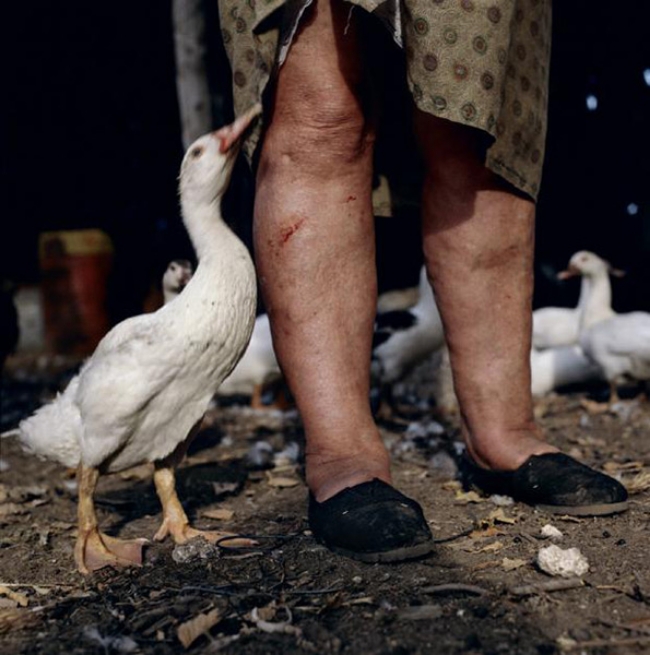
Sanguinetti isn’t making a political statement with this series. She’s no more interested in the politics of meat/vegetarianism than she is in anthropomorphizing the animals themselves. She’s simply documenting a way of life. Yes, the ducklings in the photographs are cute and the young goats are adorable, but Sanguinetti doesn’t purposely make them cute or adorable. That’s just how they are. Cuteness doesn’t save them from the table.
And yet it’s clear that Sanguinetti has some sympathy for the animals she photographs. Most of the images are shot from the same visual perspective as the animal she’s photographing. Her camera is almost always at the same level of the animal. She’s not looking down from above; she is with the duck looking to be fed; she is with the wild-eyed cow in the sorting chute.
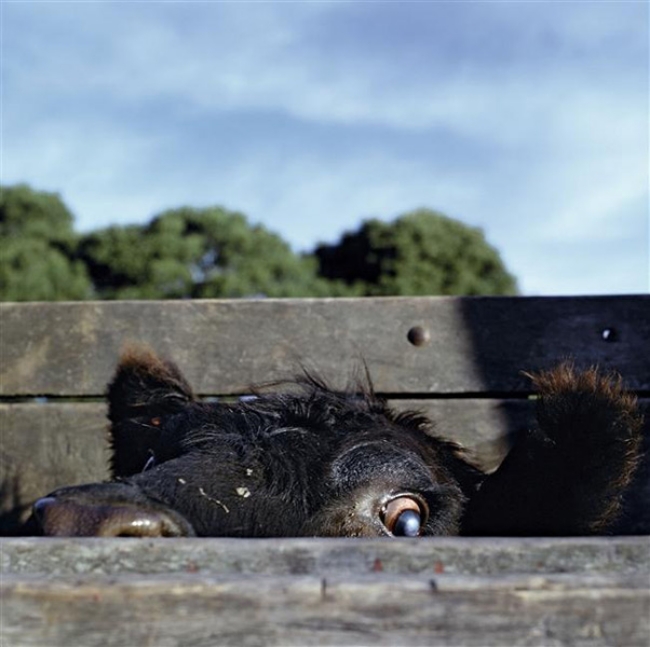
Most of us give no real thought to where our food comes from. We accept without question our position of dominion in the food chain, and we don’t really consider the how the steak on the grill or the chicken in the fajita gets from the farm to the plate. Sanguinetti isn’t drawing any direct connections; she’s simply revealing the reality. She shows us life on the farm. She shows how the farmers live, how the animals live, and how one serves the other. She does it without judgment, but she does it with deep compassion–both for the farmers and for the animals.
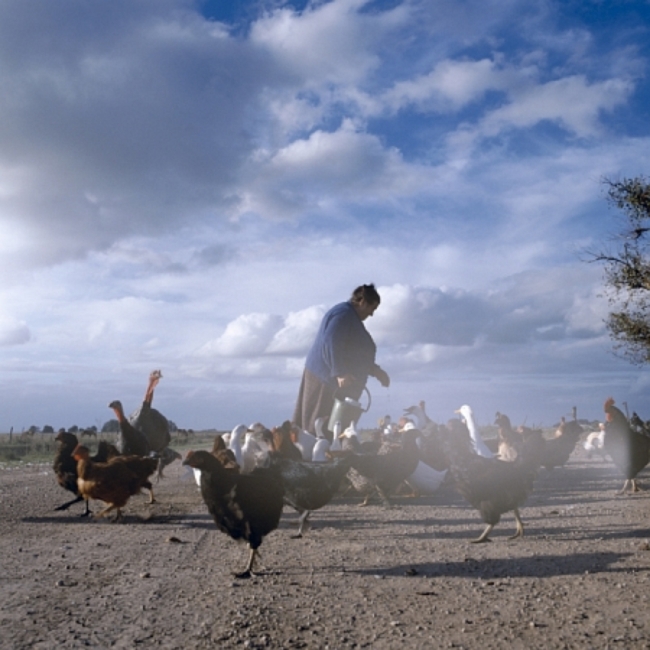
Oddly enough, the aspect of Sanguinetti’s On the Sixth Day series that rarely gets discussed is the powerful beauty of the photographs. They are wonderfully balanced and strangely formal in composition. While it’s absolutely true that this series is a meditation on the peculiar relationship between farmers, animal life, and the land they share, it’s not merely reportage; it’s also an amazing work of art. Sanguinetti manages to create images of uncomplicated beauty by using a sophisticated and formal style of composition.
For a great many reasons, that contradiction seems appropriate.

